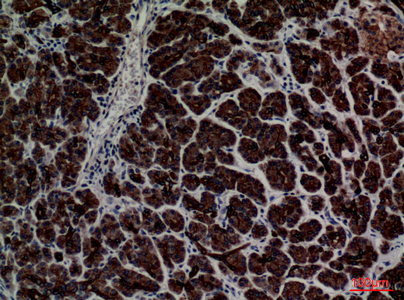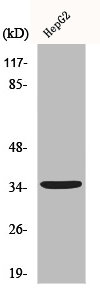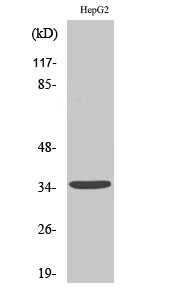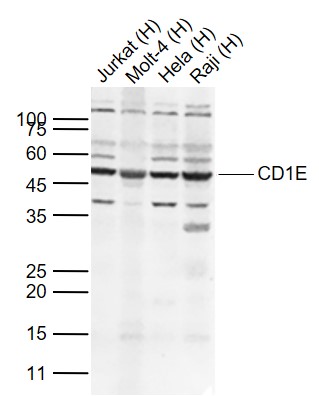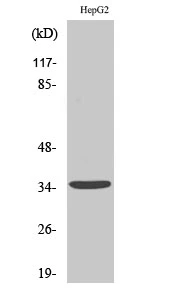
WB analysis of HepG2 cell lysate using GTX34206 CD1E antibody.
CD1E antibody
GTX34206
ApplicationsWestern Blot
Product group Antibodies
TargetCD1E
Overview
- SupplierGeneTex
- Product NameCD1E antibody
- Delivery Days Customer9
- Application Supplier NoteWB: 1:500-1:2000. *Optimal dilutions/concentrations should be determined by the researcher.Not tested in other applications.
- ApplicationsWestern Blot
- CertificationResearch Use Only
- ClonalityPolyclonal
- Concentration1 mg/ml
- ConjugateUnconjugated
- Gene ID913
- Target nameCD1E
- Target descriptionCD1e molecule
- Target synonymsCD1A, R2, T-cell surface glycoprotein CD1e, membrane-associated, CD1E antigen, e polypeptide, R2G1, differentiation antigen CD1-alpha-3, hCD1e, leukocyte differentiation antigen, thymocyte antigen CD1E
- HostRabbit
- IsotypeIgG
- Protein IDP15812
- Protein NameT-cell surface glycoprotein CD1e, membrane-associated
- Scientific DescriptionThis gene encodes a member of the CD1 family of transmembrane glycoproteins, which are structurally related to the major histocompatibility complex (MHC) proteins and form heterodimers with beta-2-microglobulin. The CD1 proteins mediate the presentation of primarily lipid and glycolipid antigens of self or microbial origin to T cells. The human genome contains five CD1 family genes organized in a cluster on chromosome 1. The CD1 family members are thought to differ in their cellular localization and specificity for particular lipid ligands. The protein encoded by this gene localizes within Golgi compartments, endosomes, and lysosomes, and is cleaved into a stable soluble form. The soluble form is required for the intracellular processing of some glycolipids into a form that can be presented by other CD1 family members. Many alternatively spliced transcript variants encoding different isoforms have been described. Additional transcript variants have been found; however, their biological validity has not been determined. [provided by RefSeq, Jun 2010]
- Storage Instruction-20°C or -80°C,2°C to 8°C
- UNSPSC12352203

